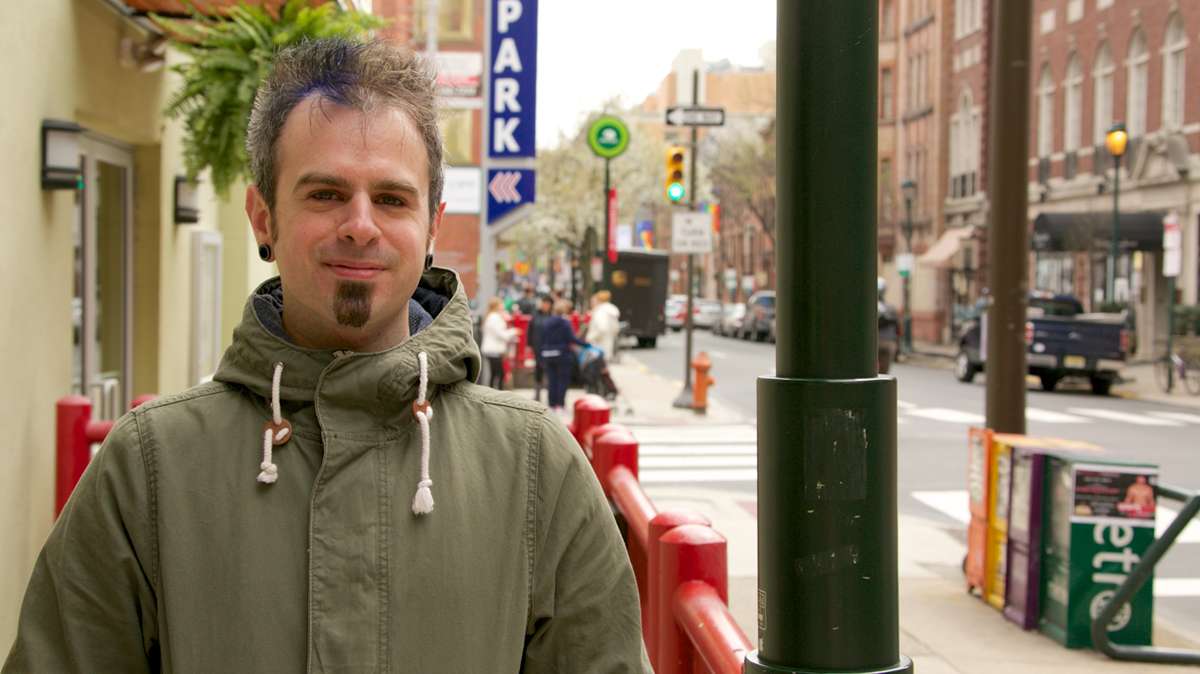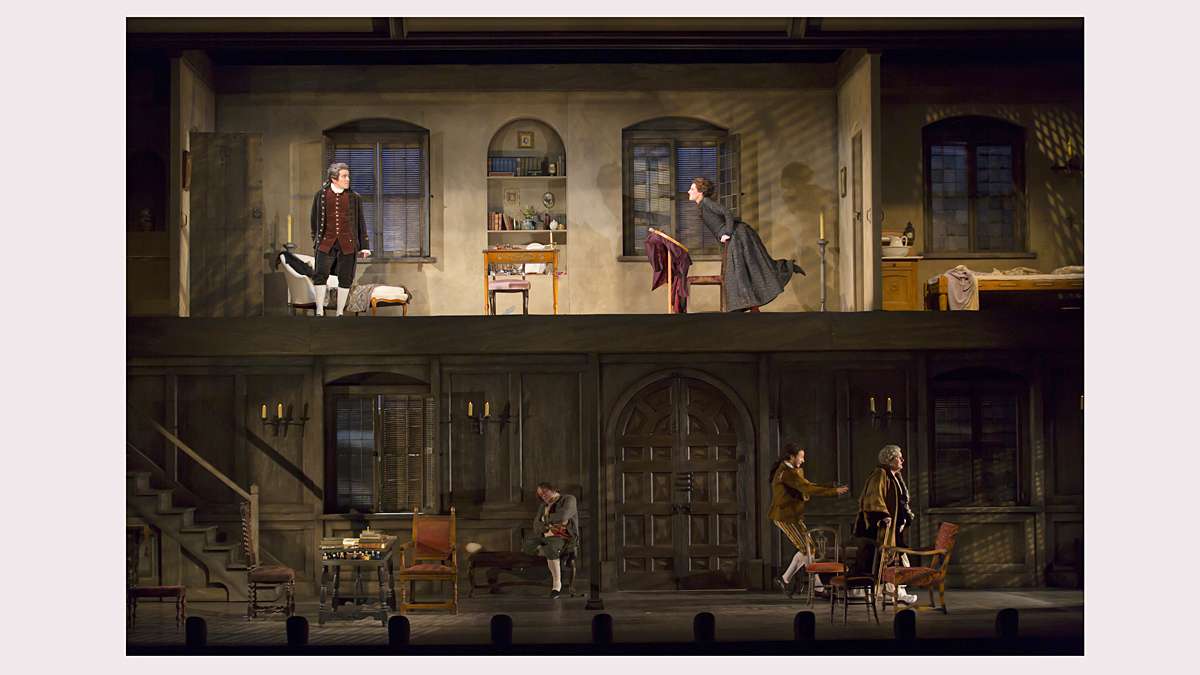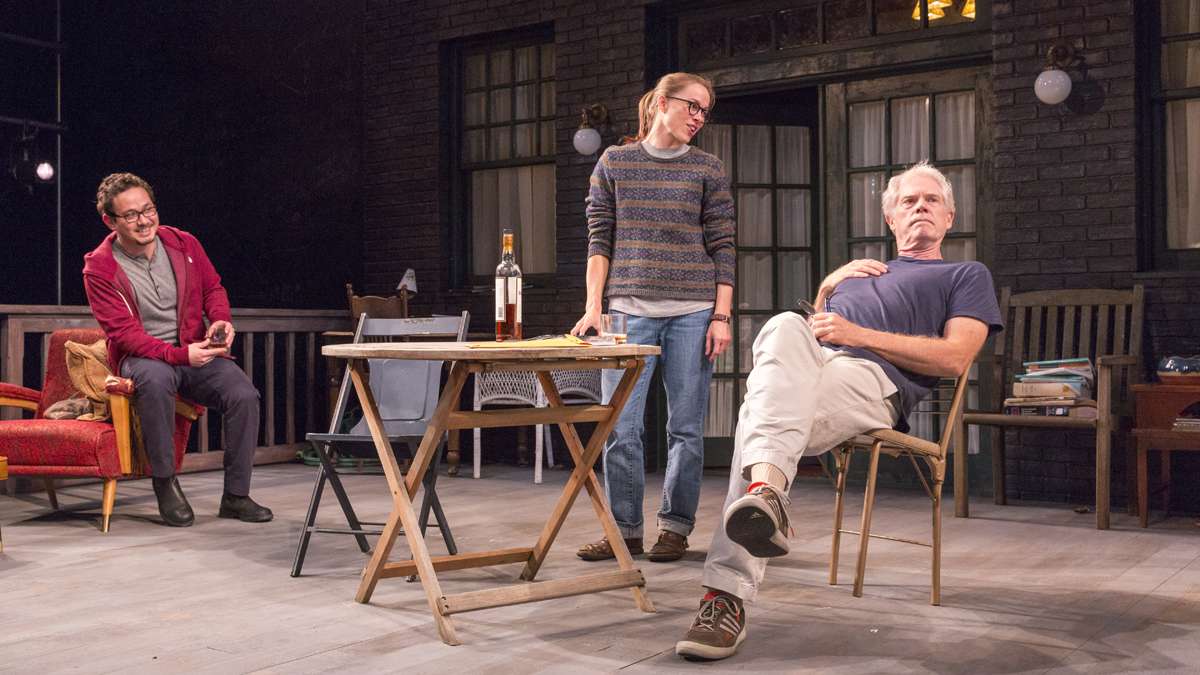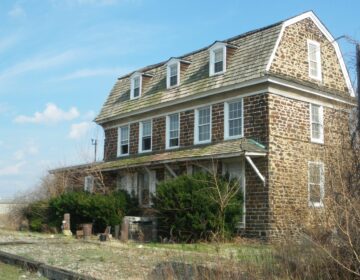Behind-the-scenes with set designers at Princeton’s McCarter Theatre
-

-

(Nathaniel Hamilton for WHYY, file)
-

-

-

-

-

No matter what Princeton audiences think of the play at McCarter Theatre Center, they all seem to agree on the set. The oohs and ahs begin as theater-goers are ushered into the Matthews or Berlind theaters.
A recent standout was Eugene Lee’s design for Proof in September 2013, a bedazzling and detail-rich façade of a Chicago house against a backdrop of an enormous blackboard on which mathematical equations take over. McCarter has employed Lee no fewer than 10 times. Also the production designer for Saturday Night Live, Lee has won numerous Tony and Drama Desk Awards for Wicked, Sweeney Todd, Candide and Showboat.
But even when Lee is tied up with commitments as resident designer at Trinity Rep in Providence, R.I., or adjunct professor at Brown, McCarter’s sets stand out. Technical Director Chris Nelson and Prop Master Michele Sammarco, under Director of Production David York, and their team make sure all the moving parts come together.
Shortly before the opening of the season’s finale — The Marriage of Figaro and The Barber of Seville, performed in repertory — the McCarter production shops at 744 Alexander Street, West Windsor, were bustling with activity. In an old Bohren’s Moving and Storage facility re-outfitted in 2003, Sammarco and Nelson were juggling demands. A props artisan was making luggage, purchased on eBay, look appropriately vintage, and a carpenter was building a jury box. With perfectly mitered corners and softly sanded sides, the inexpensive plywood would be painted to look like fine walnut with trompe-l’oeil moulding and panels. Also in production were castle doors for the main house of The Barber of Seville, finished to look like 100-year-old doors. Large fabricated butterflies from A Winter’s Tale fluttered up above, and the costume shop was abuzz with people sewing and ironing.
Next year’s productions are already in the planning stages. Nelson and Sammarco look at drawings to see how it is all coming together. “We usually get five to six weeks to build the set and put it in place,” says Nelson.
“And during four of those weeks they’re rehearsing,” adds Sammarco. “We know most of the props, but important information about the props comes out of rehearsal. We know the basic design ahead of time, so (we) start shopping and putting it together.” During rehearsals they may find out a chair is the wrong style or the director doesn’t like the upholstery, “so we can’t get real far ahead.”
When they work with Eugene Lee, objects have to be natural and real and raw. “He likes that feeling of found objects and things that aren’t faked,” says Sammarco. “He has no affinity at all for realistic backdrops. He doesn’t have any desire to deny we’re in the theater.”
Nelson spends time going to salvage yards. For the trailer in Last of the Boys he found something that had been sitting around for 30 years, covered in mold and dirt, but was real and had character to it. “Eugene knew the trailer would be the centerpiece of the play, so we worked on it ahead – that’s the kind of thing you can’t build,” says Nelson.
Sometimes the most simple set can be the hardest to build. Romeo and Juliet was stark, with giant white walls, a chandelier and a fountain in the middle, but those walls were expensive to build.
For The Iliad, performed on the Matthews stage, an actor walks out on a deserted set to talk to the audience. The back wall of the Matthews has only been minimally altered since the very first production of Our Town was performed there in 1938. The set designer had them build a replica of the back wall because the stage was too big. Everything was replicated, from the drainage pipes to the insulation. When a worker from the University maintenance department came to fix a leak, he stared at the replica, completely confused.
“The audience must have thought we had nothing to build,” says Nelson.
Sammarco and Nelson consider themselves caretakers of design, going between designer and the design team to create the reality of what the director wants.
When the curtain comes down for the final time, the built items may be saved for another production, disassembled for raw materials or sold on Craigslist.
For Christmas Carol, performed every year, there is an entire closet of costumes, freshly dry cleaned. Fezziwig changes every year, so his costumes must come in a variety of sizes.
The upper floor of the warehouse looks like a bazaar. There are aisles of shelves of teapots, samovars, wine and beer bottles, silver service, record players, spices, cookie tins, law books and fake books, chandeliers, fabric bolts, more suitcases and chairs – you never know when they’ll be needed again.
Eugene Lee will return to McCarter Theatre Center in October of 2014 to design The Understudy by Theresa Rebeck.
__________________________________________
The Artful Blogger is written by Ilene Dube and offers a look inside the art world of the greater Princeton area. Ilene Dube is an award-winning arts writer and editor, as well as an artist, curator and activist for the arts.
WHYY is your source for fact-based, in-depth journalism and information. As a nonprofit organization, we rely on financial support from readers like you. Please give today.





